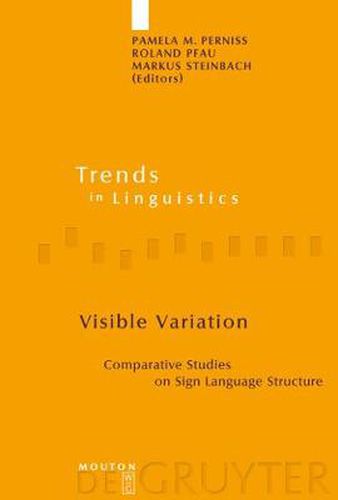Readings Newsletter
Become a Readings Member to make your shopping experience even easier.
Sign in or sign up for free!
You’re not far away from qualifying for FREE standard shipping within Australia
You’ve qualified for FREE standard shipping within Australia
The cart is loading…






It has been argued that properties of the visual-gestural modality impose a homogenizing effect on sign languages, leading to less structural variation in sign language structure as compared to spoken language structure. However, until recently, research on sign languages was limited to a number of (Western) sign languages. Before we can truly answer the question of whether modality effects do indeed cause less structural variation, it is necessary to investigate the similarities and differences that exist between sign languages in more detail and, especially, to include in this investigation less studied sign languages.
The current research climate is testimony to a surge of interest in the study of a geographically more diverse range of sign languages. The volume reflects that climate and brings together work by scholars engaging in comparative sign linguistics research. The 11 articles discuss data from many different signed and spoken languages and cover a wide range of topics from different areas of grammar including phonology (word pictures), morphology (pronouns, negation, and auxiliaries), syntax (word order, interrogative clauses, auxiliaries, negation, and referential shift) and pragmatics (modal meaning and referential shift). In addition to this, the contributions address psycholinguistic issues, aspects of language change, and issues concerning data collection in sign languages, thereby providing methodological guidelines for further research. Although some papers use a specific theoretical framework for analyzing the data, the volume clearly focuses on empirical and descriptive aspects of sign language variation.
$9.00 standard shipping within Australia
FREE standard shipping within Australia for orders over $100.00
Express & International shipping calculated at checkout
It has been argued that properties of the visual-gestural modality impose a homogenizing effect on sign languages, leading to less structural variation in sign language structure as compared to spoken language structure. However, until recently, research on sign languages was limited to a number of (Western) sign languages. Before we can truly answer the question of whether modality effects do indeed cause less structural variation, it is necessary to investigate the similarities and differences that exist between sign languages in more detail and, especially, to include in this investigation less studied sign languages.
The current research climate is testimony to a surge of interest in the study of a geographically more diverse range of sign languages. The volume reflects that climate and brings together work by scholars engaging in comparative sign linguistics research. The 11 articles discuss data from many different signed and spoken languages and cover a wide range of topics from different areas of grammar including phonology (word pictures), morphology (pronouns, negation, and auxiliaries), syntax (word order, interrogative clauses, auxiliaries, negation, and referential shift) and pragmatics (modal meaning and referential shift). In addition to this, the contributions address psycholinguistic issues, aspects of language change, and issues concerning data collection in sign languages, thereby providing methodological guidelines for further research. Although some papers use a specific theoretical framework for analyzing the data, the volume clearly focuses on empirical and descriptive aspects of sign language variation.